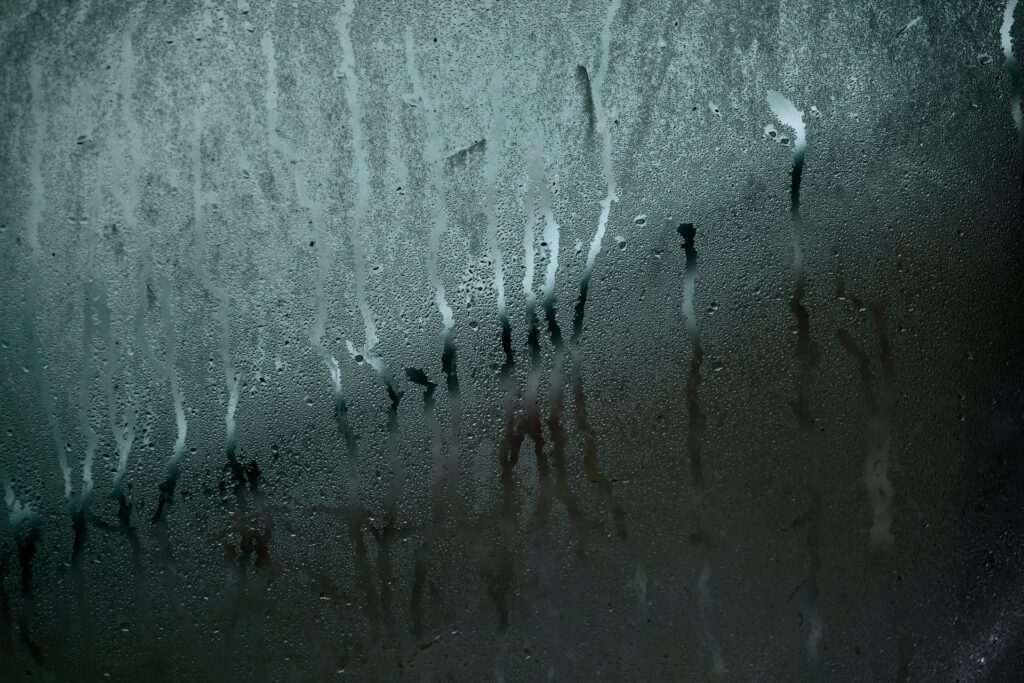Condensation Control
Condensation Control
Condensation is caused when warm humid air comes into contact with a cold surface. A perfect example of this is when steam from a shower comes in contact with a cold bathroom window. Droplets of water form on the cold window surface.
The point at which condensation occurs is called the dew point. The dew point is dependent on the water content of the air, not on the humidity, as the relative humidity (RH) is only a measure of the ability of air to hold water. Warm air can hold more moisture than cool air, When warm air carrying moisture is cooled below dew point it can no longer hold the moisture in the air and condensation occurs. Dew point is always at 100% RH.
In conditions of high water content, condensation will occur on any surface which is cold relative to the surrounding air. These surfaces such as external walls and windows, are usually ones where heat is being conducted through them which makes them cold. Condensation or dew point can be avoided if there are no cold surfaces available for it to happen on. This can be achieved in two ways:
- Extra heating in the space.
- Very well insulated surfaces.
These measures can only go so far in the prevention of condensation.
Sources of Moisture
Water is continuously produced by the activities of the occupants of the space (breathing, washing, and cooking). According to the British Standard BS5250 Code of practice for control of condensation in buildings (Sept 2005) typical moisture generation rates are:
- Sleeping: 0.04 litres/hr per person,
- Active: 0.055 litres/hr/person,
- Cooking: 2 – 3 litres/day/household,
- Dishwashing: 0.4 Litres/day/household,
- Bathing/washing: 0.2 litres/day/person,
- Washing clothes: 0.5 litres/day/household,
- Drying clothes indoors (e.g. using an unvented tumble drier): 1.5 litres/day/person.
Moisture that is generated from heating fuels can be additional if it is not vented to the outside.
Condensation is inevitable at some point, even on a relatively warm surface. The solution is to reduce the water content of the air or get rid of the water-laden air and replace it with fresh air from outside. In our damp, humid climate one might think that taking in this cold air would make matters worse. This will not be the case because external (cold) air in winter may have a high % RH but a low water content and when it is warmed by the exiting air its % RH drops considerably. It now has to collect a lot of water before it reaches 100% RH and dew point again. With the correct level of air change, it will have exited again before reaching 100% and dew point. The solution to condensation problems lies with a three pronged strategy:
- A reduction of cold surfaces by means of good insulation.
- Space heating.
- Energy efficient ventilation.
Higher levels of insulation will lead to lower levels of the other two while higher levels of heating and ventilation will compensate for the absence of good insulation.
How can ProAir help?
ProAir MVHR units remove the moist air at the source, above the shower for example, and replaces the moist air with filtered fresh air that is at a comfortable and healthy humidity level. This will ensure that condensation and mould growth does not occur in your home.






